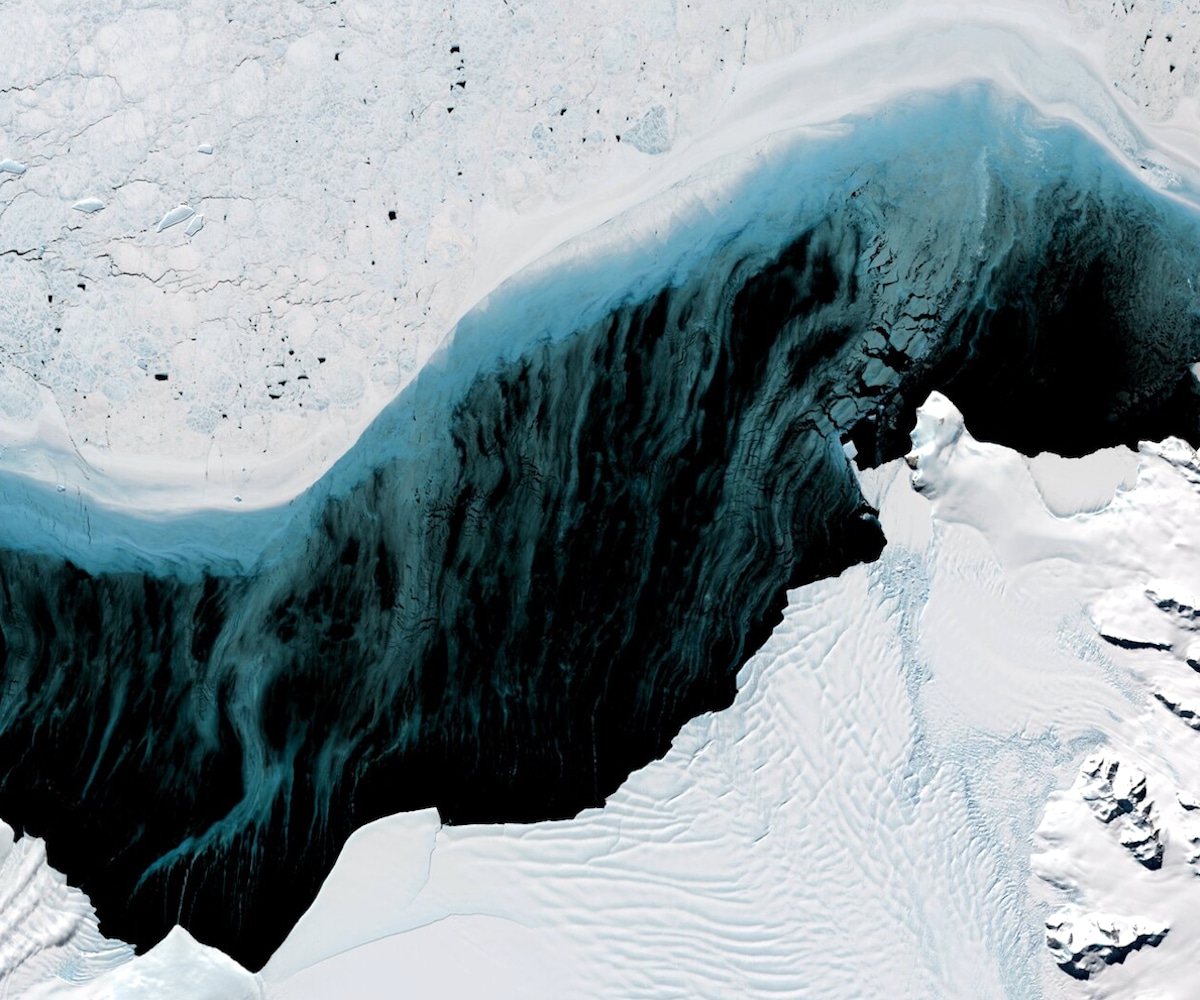Products You May Like
Landsat 8 satellite image showing the highly dynamic SCAR Inlet Ice Shelf in Antarctica. NASA / USGS
 Why you can trust us
Why you can trust us
Founded in 2005 as an Ohio-based environmental newspaper, EcoWatch is a digital platform dedicated to publishing quality, science-based content on environmental issues, causes, and solutions.
Evidence from the last ice age has troubling implications for future sea level rise.
The research, published in Nature Wednesday, found that ice sheets could collapse around 20 times faster than previously assumed as the climate warms.
“Our research provides a warning from the past about the speeds that ice sheets are physically capable of retreating at,” research leader Dr. Christine Batchelor of Newcastle University in the UK said in a press release. “Our results show that pulses of rapid retreat can be far quicker than anything we’ve seen so far.”
More From EcoWatch
The scientists, who also hailed from the UK universities of Cambridge and Loughborough and the Geological Survey of Norway, studied an ice sheet that once extended from Norway around 20,000 years ago, towards the end of the last ice age. They used high-resolution seafloor imagery to find places where the retreating ice sheet forced up sediment into “corrugation ridges” during low tides as it moved backwards. Measuring the distance between these tidal ridges allowed them to determine the ice sheet’s pace of retreat, and they found it could move by as much as 50 to 600 meters (approximately 164 to 1,968.5 feet) per day.
“This is not a model. This is real observation. And it is frankly scary. Even to me,” glaciologist Eric Rignot, who was not part of the research team, told The Washington Post.
The rates of retreat are much higher than current observations. For example, during 2017, satellite data revealed that Antarctica’s Pope Glacier retreated at a rate of around 105 feet per day. Now, researchers are concerned that Antacrica’s ice sheets could meet these historic retreat rates if countries keep burning fossil fuels and temperatures rise to what was seen at the end of the previous ice age.
“If temperatures continue to rise, then we might have the ice being melted and thinned from above as well as from below,” Batchelor told The Washington Post, “so that could kind of end up with a scenario that looks more similar to what we had [off] Norway after the last glaciation.”
Sea level rise is such a concern because so many major cities are located along the coasts, The Guardian noted. The entire West Antarctic ice sheet has the potential to raise sea levels by 3.3 meters (approximately 10.8 feet), as Université du Québec à Montréal Marta Moreno Ibáñez wrote in March.
“The study [shows] that in the future faster retreat rates than presently observed in, e.g. Antarctica, are indeed possible under specific circumstances,” Dr. Johannes Feldmann at the Potsdam Institute for Climate Impact Research in Germany, who was not part of the study, told The Guardian. “The implications of such rapid retreat are serious, given the generally irreversible nature of ice sheet retreat.”
Subscribe to get exclusive updates in our daily newsletter!
By signing up, you agree to the Terms of Use and Privacy Policy & to receive electronic communications from EcoWatch Media Group, which may include marketing promotions, advertisements and sponsored content.
